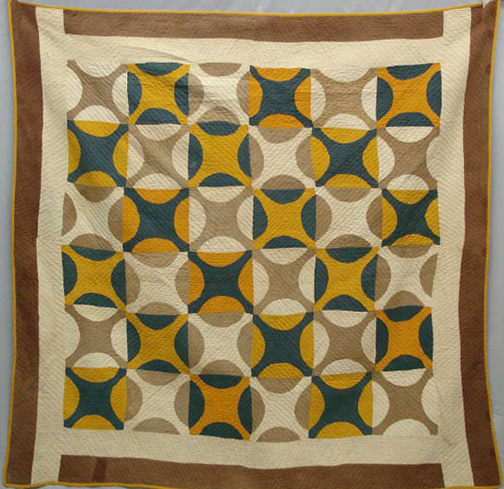I've been thinking about border style and how it can be used as a weak clue to help date antique quilts.
In this post I talked about what we call the Spacer Border and how it was popular at the end of the 19th century, particularly with quilters of the Anabaptist religions.
Women in all kinds of quilting communities used multiple strip borders to frame their designs---here four strips and a contrasting binding.
But, as all beginning quiltmakers have to learn, there are design problems with multiple strip borders.
You can't piece the strips together and add them...unless you miter the corners. If you plan on a mitered corner you can piece plain strips and pieced strips first and then attach the whole thing to the blocks.
Which is how you get a neat framed corner.
This quadruple strip border looks to be mitered.
But mitering takes more fabric and it's a little tricky to stitch, so when you look at antique quilts you usually see that the seamstress added one border at a time as probably happened in this one.
Adding one border at a time means you can butt the
rectangles against one another, which is the common method.
At least, those quilters who liked a neat framed corner did it that way.
Not everyone valued that look in the corners.
Many, many quiltmakers pieced the strips together and butted the corners.
Perhaps not getting an "A+" in home ec.
But creating some pretty great compositions.
These run-on corners do seem to be more common after 1880 than before
so once again the border style can be a weak clue to date.
As in this one where you get the feeling that the blocks and the paisley sashing might be before 1880 but the 3-strip border of solid fabrics (with a red fading to khaki) was added after 1880.
If you are making reproduction quilts you sometimes face a dilemma.
Our aesthetic or theirs?


Ldg~~60_3.jpg)

BQq9NVm6Qw~~60_57.jpg)










